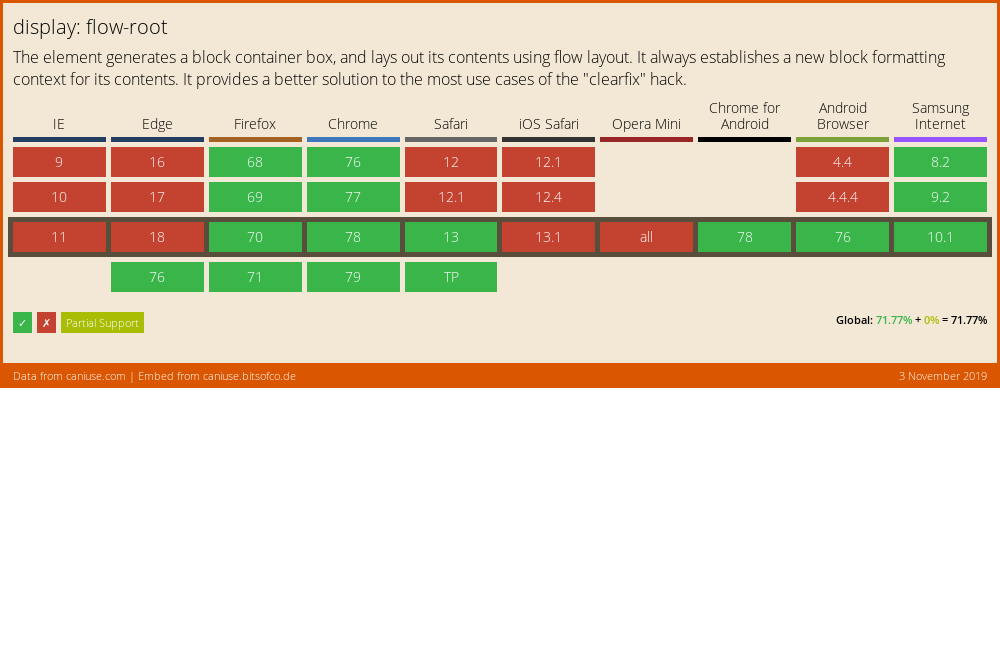display: flow-root, a clearfix replacement
display: flow-root #
The post talks about elements of a W3C candidate recommendation, CSS Display Module Level 3. It's possible but highly unlikely, that things will change before the recommendation is finalized.
Most developers (myself included) will be familiar with some values for the display property:
- block
- inline
- inline-block
- grid
- flex
And we use these in most of our everyday design, dating to the "age of floats" design philosophy. To see the full list check out the MDN article on the display property.
Using flow-root. The end of clearfix? #
Rachel Andrew's The end of the clearfix hack? explains a new way to avoid the clear fix hack.
From Clearfix: A Lesson in Web Development Evolution
The clearfix, for those unaware, is a CSS hack that solves a persistent bug that occurs when two floated elements are stacked next to each other. When elements are aligned this way, the parent container ends up with a height of 0, and it can easily wreak havoc on a layout. All you might be trying to do is position a sidebar to the left of your main content block, but the result would be two elements that overlap and collapse on each other. To complicate things further, the bug is inconsistent across browsers. The clearfix was invented to solve all that.
The idea is that using the ::after pseudo element we add attributes that fill force the clearing of the floats and get us the layout we want.
The most basic clearfix looks like this:
.container::after {
content: "";
display: block;
clear: both;
}display: flow-root replaces the clearfix with a single attribute. it creates a new block formatting context for the element using flow layout formatting, fixing the layout without needing additional attributes.
Using flow-root the element itself now looks like this:
.container {
display: flow-root;
}We don't need to use the ::after pseudo-element to generate a clearfix anymore.
To see what issues display: flow-root solves see this Codepen from Rachel Andrew.
Browser support #
Browser support for display:flow-root is not quite there yet. Current (non-Chromium versions) of Edge and iOS Safari support the feature, although desktop Safari does.
[

Data on support for the flow-root feature across the major browsers from caniuse.com
](http://caniuse.com/#feat=flow-root)
Until support is normalized code defensively and either use @support to target browsers that support the feature and use the clearfix for browsers that don't support either @supports or display: flow-root
